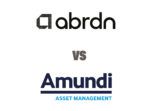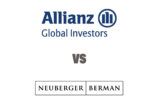Even though the market consensus is currently very much slated towards investment grade, now could be a good time to look at high yield in part because the financial metrics for a lot of the higher quality issuers are robust.
That is the view at least of Leon Goldfeld, Asia Pacific head of multi-asset solutions at JP Morgan Asset Management.
“What’s really interesting about high yield to us is that there was a lot of restructuring, refinancing of high yield issuers in 2020 and 2021 when yields were very low and so actually even though high yield is usually issued on a three to five year cycle, the maturities that really are going to come up and need to be refinanced (and if interest rates stay high they’ll have to be refinanced at a high interest rate) are not until 2025,” he told FSA.
“So, when we look at the balance sheet and P&L statement of a high yield issuer, particularly when we aggregate it, the interest cover, the debt ratios are still looking quite attractive.”
Goldfeld’s comments very much buck the trend as practically all asset managers since the start of the year have been overweight investment grade, but high yield has garnered much less interest because spreads remain historically narrow even if yields are elevated.
The ICE BofA US High Yield Index Option-Adjusted Spread was last quoted at 3.98% versus 10.87%, for example, when the coronavirus crisis first hit in March 2020.
Goldfeld said that the asset manager was currently allocating to both investment grade and high yield in their income funds as part of a barbell approach to help offset the duration risk in their portfolio.
Goldfeld noted that given how inverted the yield curve currently is, the only way to get round the negative carry was to allocate more to higher-yielding securities.
Overall, Goldfeld said the firm currently took a fairly balanced view when it comes to equities.
“If risk off is zero and risk on is 10, we are probably today around five, five-and-a-half so it’s not leaning today too much into risk but as we go through time and particularly if we see some price weakness, a little bit of growth backtracking, we will look to be adding into equities rather than defending away from equities,” he said.
He was particularly bullish about Japan, which is very much the consensus among asset managers. He noted that Asia’s second largest economy was currently benefiting from negative real rates, in contrast to the rest of the world, which meant that there were fewer headwinds in terms of financial conditions.
Regarding the recent AI boom, which has lifted the stock prices of the so-called magnificent seven – Amazon, Apple, Alphabet, Meta, Microsoft, Nvidia and Tesla – he noted that the repricing was warranted.
He mentioned that the timeline for when AI would become a disruptive force had been brought forward, meaning that on a discounted cash flow model, valuations should go up, but said that there were signs now that the equity markets were broadening out and going forward any rally would be more likely to be driven by macro factors.

















